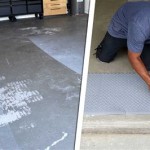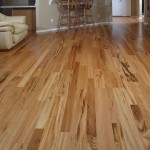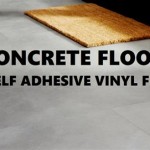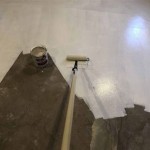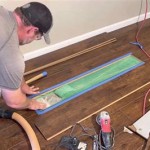What To Use To Get Paint Off Vinyl Flooring
Discovering paint splatters on vinyl flooring can be frustrating, but prompt action and the right cleaning methods can often restore its original appearance. The type of paint and the duration it has been on the floor will influence the most effective removal strategy. Understanding the composition of the vinyl and the potential impact of different cleaning agents is crucial for avoiding further damage.
1. Assessing the Paint and the Vinyl
Before attempting any paint removal, identifying the type of paint is essential. Water-based paints, like acrylics and latex, are generally easier to remove than oil-based paints or enamels. If the paint is still wet, immediate action with a damp cloth can often prevent it from setting. Dried paint, however, will require more intensive methods. It’s also important to consider the type of vinyl flooring. Luxury vinyl plank (LVP) and vinyl sheet flooring have different wear layers and may react differently to cleaning agents. Testing any cleaning solution in an inconspicuous area is always recommended.
Determining the age of the paint stain is another key factor. Fresh paint splatters are considerably easier to remove than those that have dried and hardened over time. Knowing the age of the stain helps dictate the appropriate cleaning method, ranging from simple wiping to the use of specialized solvents. Older stains might require more aggressive approaches and repeated applications of cleaning solutions.
2. Utilizing Gentle Cleaning Methods
For water-based paints, warm soapy water is often the best initial approach. Mix a small amount of dish soap with warm water and apply it to the affected area using a soft cloth or sponge. Gentle rubbing may be necessary, but avoid abrasive scrubbing pads, which can scratch the vinyl's surface. This method is particularly effective for fresh paint spills. Rinse thoroughly with clean water and dry the area to prevent watermarks.
Isopropyl alcohol, commonly known as rubbing alcohol, can be effective on both water-based and some oil-based paints. Apply a small amount of rubbing alcohol to a clean cloth and gently dab the paint stain. Avoid excessive rubbing, which can damage the vinyl. Test the alcohol in an inconspicuous area first, as some vinyl types may react negatively to it. After the paint loosens, wipe the area clean with a damp cloth and dry thoroughly.
A paste made from baking soda and water can be a gentle yet effective abrasive for removing dried paint. Mix baking soda and water to form a thick paste, apply it to the paint stain, and let it sit for a few minutes. Then, gently rub the paste with a soft cloth or sponge. The mild abrasive action of the baking soda can help lift the paint without scratching the vinyl. Rinse the area with clean water and dry completely.
3. Employing Stronger Solvents (With Caution)
For stubborn, dried paint, particularly oil-based or enamel paints, commercial paint removers designed for use on vinyl may be necessary. These products often contain stronger solvents, so it's crucial to follow the manufacturer's instructions carefully and ensure adequate ventilation. Always test the paint remover in an inconspicuous area first to check for any adverse reactions with the vinyl. Apply the paint remover sparingly and allow it to dwell as directed on the product label. Gently scrape the softened paint with a plastic scraper, avoiding metal tools that could scratch the floor. Once the paint is removed, clean the area thoroughly with a damp cloth and dry it completely.
Goo Gone, a commercially available adhesive remover, can sometimes be effective on dried paint, especially latex-based paint. Apply a small amount of Goo Gone to the affected area and let it sit for a few minutes to soften the paint. Gently rub the area with a soft cloth or sponge. As with any cleaning solution, it’s important to test Goo Gone in an inconspicuous area first to ensure compatibility with the vinyl flooring. After removing the paint, clean the area with a damp cloth and dry thoroughly.
WD-40, a multi-purpose lubricant, can also be used to remove some types of paint from vinyl flooring. Spray a small amount of WD-40 directly onto the paint stain and let it sit for a few minutes to penetrate the paint. Gently rub the area with a soft cloth or sponge. Again, test in an inconspicuous area first. After the paint is removed, clean the area with a mixture of warm water and dish soap to remove any residual WD-40 and prevent slipperiness. Dry the area completely.
4. Preventing Future Paint Spills
Preventing paint spills is always the best strategy. When painting near vinyl flooring, covering the floor with drop cloths or plastic sheeting is highly recommended. This protective barrier prevents paint from coming into direct contact with the vinyl, significantly reducing the risk of staining. Securing the edges of the covering with painter's tape can further prevent paint from seeping underneath. Taking these preventative measures can save significant time and effort in cleaning up paint spills.

How To Get Paint Off Vinyl Floor Watch Before You Use Mineral Spirits

Easily Remove Paint From Your Floors

How To Remove Paint Off Hardwood Vinyl Floor

How To Get Paint Off Vinyl Flooring Wildfire Interiors

How To Get Paint Off Vinyl Floor Completely 3 Easy Methods Home Briefings

How To Get Paint Off Vinyl Flooring Wildfire Interiors

Remove Paint From Vinyl Floors Best Ways To Get Off

Remove Paint From Vinyl Floors Best Ways To Get Off

How To Remove Dried Paint From Vinyl Flooring Countyoffice Org

How To Remove Paint Off Hardwood Floors Safely
See Also

